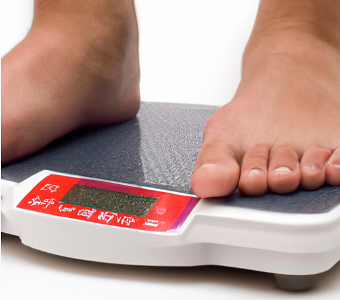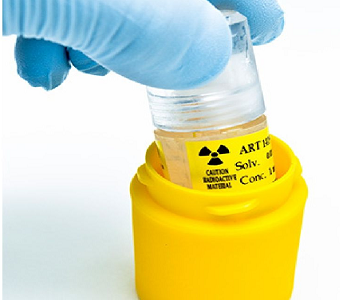Update: On November 11, Viropharma was purchased by Shire Pharma for $4.2B. The acquisition netted PropThink readers who bought alongside us saw a 100% return in less than a year.
Since our initial December report on ViroPharma (VPHM), shares of the biotechnology company have rallied over 70% as the company has worked diligently to put the erosion of Vancocin behind it and move forward with Cinryze and its emerging pipeline. With its Q3 results now released, we see further upside as Cinryze growth accelerates and investors receive more and more clarity on the potential in ViroPharma’s pipeline.
Q3 2013: Commercial Expansion, At Home & Abroad
For the third quarter of 2013, ViroPharma posted consolidated revenues of $113.062 million. Although this missed estimates by $250,000, the company’s beat on EPS ($0.20 versus an estimate of $0.18) as well as raised guidance (more on this later) more than made up for this slight miss. We present a brief overview of ViroPharma’s results in the table below before delving into the quarter itself.
ViroPharma Results, Q3 2013 (in Thousands of $)
|
Sequential Change |
Y/Y Change |
||||
|
Cinryze Revenue |
$106,502 |
$94,638 |
$85,260 |
+12.54% |
+24.91% |
|
Vancocin Revenue |
$583 |
$4,017 |
$3,660 |
-85.49% |
-84.07% |
|
Other Revenue* |
$5,977 |
$5,056 |
$2,084 |
+18.22% |
+186.8% |
|
Total Revenue |
$113,062 |
$103,711 |
$91,004 |
+9.02% |
+24.24% |
|
Gross Profit |
$85,583 |
$75,553 |
$69,452 |
+13.28% |
+23.23% |
|
Gross Margin |
75.7% |
72.85% |
76.32% |
+285 bps |
-62 bps |
|
Operating Income |
$27,900 |
$18,464 |
$13,240 |
+51.1% |
+110.73% |
|
Operating Margin |
24.68% |
17.8% |
14.55% |
+688 bps |
+1,013 bps |
|
EPS |
$0.20 |
$0.15 |
$0.10 |
+33.33% |
+100% |
*Covers Plenadren and Buccolam in Europe
Despite further declines in Vancocin sales during the quarter, ViroPharma’s other products allowed the company to post revenue growth on both a sequential and year-over-year basis, with sales of Plenadren and Buccolam more than doubling year-over-year. Although the company’s gross margin declined slightly year-over-year, we believe that this was caused by the ramp up in European sales and the structurally lower gross margins of those products. On the Q3 earnings call, management indicated that favorable pricing of Cinryze helped boost its gross margin, mitigating the effect of increased European sales. Going forward, the company expects Cinryze gross margins of around 75%, up from prior guidance of 70%. And in any case, we believe that the jump in operating margins to almost 25% is far more notable. This increase was driven by tight cost controls across all of ViroPharma; pro forma operating expenses rose by less than 10% year-over-year. In addition to delivering revenue growth on both a sequential and year-over-year basis, as well as boosting operating margins, ViroPharma also raised its 2013 guidance, boosting Cinryze sales guidance by $5 million, from a midpoint of $395 million to $400 million (consolidated sales guidance was also raised by $5 million to a midpoint of $455 million). ViroPharma’s Q3 was dominated by the accelerating growth of Cinryze, both in the United States and in Europe. The company added 55 net new patients in the quarter, versus the usual 40, evidence of the growing impact of the company’s salesforce expansion program. CEO Vincent Milano also announced that further expansion is set to take place in Q4, with the addition of 8 more HAE sales staff, bringing ViroPharma’s total to 41. In the United States, Cinryze sales rose by 22.2% year-over-year to over $102 million as the sales force expansion takes hold and Cinryze continues to take share. CFO Charlie Roland disclosed on the company’s earnings call that 40% of new patients to Cinryze in Q3 switched from steroids, and that over 25% of new patients switched from acute HAE therapies. In Europe, Cinryze is also continuing to grow, with European sales rising over 168% year-over-year to $4.3 million. Management reiterated guidance that ViroPharma’s European business will be profitable in 2014, driven by continued growth in Cinryze sales, and growing reimbursement for Buccolam and Plenadren, both of which secured reimbursement in July in France and Italy.
Cinryze growth in the United States was also helped by growing awareness of the disease. On ViroPharma’s earnings call, analysts noted that even competing HAE drugs (Kalbitor, Firazyr) have performed well in Q3 and Q2. CEO Vincent Milano attributed that to increased investment by many companies in the field on growing awareness of HAE. He noted that at the 2013 U.S. Hereditary Angioedema National Patient Summit (held from September 27-29), a total of 6 companies were sponsors (including ViroPharma, Shire, and Dyax), and noted that diagnoses of HAE are increasing. There are no reliable estimates for the true prevalence of HAE; estimates of its prevalence range from 1 in 10,000 to as high as 1 in 100,000, and physicians have identified three separate types of HAE (as measured by levels of C1-INH). Furthermore, almost a fifth of HAE cases are not hereditary at all, but rather caused by spontaneous genetic mutations, potentially causing misdiagnosis as the symptoms are dismissed because a patient’s parents do not have HAE (a child born to parents with HAE has a 50% chance of having the disease). HAE attacks can be mistaken for allergic reactions, leading to delays in the start of HAE therapy as physicians work through various allergens in an attempt to isolate the cause of these attacks. With increased awareness of HAE, patients with the disease have the potential to begin treatment sooner, boosting the size of the HAE market, and with it, Cinryze sales.
Cinryze Competition: Working to Keep the Lead
Since its launch, Cinryze has steadily taken share from competing HAE treatments due to its role as the only FDA-approved prophylactic treatment for HAE. Competing products, such as those from Dyax, CSL Behring, and Shire are only approved to treat acute HAE attacks, and Santarus’ (SNTS) Ruconest is now under review to treat acute HAE attacks, with a PDUFA date of April 16, 2014 (the drug is already approved in Europe). Cinryze’s role as a prophylactic treatment for HAE has not only allowed ViroPharma to capture the majority of the HAE market (estimates suggest that Cinryze holds over 60% of the HAE market, but these are not exact figures), but to command a price tag of $350,000 per year, making Cinryze the 4th most expensive drug in the world. Such pricing, and the profits that it brings, has attracted competition from several sources, including Dyax, BioCryst (BCRX), and Santarus, all of whom are developing prophylactic HAE treatments. However, we believe that ViroPharma’s position is secure, through mechanisms of action, or the simple matter of timing.
Dyax is testing DX-2930 as a potential prophylactic treatment for HAE, building upon the plasma kallikrein inhibition of Kalbitor. However, Kalbitor carries with it a severe REMS and black box warning, which were mandated by the FDA after Kalbitor’s initial 2009 rejection. DX-2930 is based on this same mechanism of action, as is BioCryst’s BX-4161, which is in Phase II trials. We have covered in detail the challenges facing BX-4161, which include its mechanism of action, its bioavailability, as well as the looming emergence of subcutaneous Cinryze (more on this below). Ruconest is perhaps the most notable potential competitor. Although the current BLA under review by the FDA covers the use of Ruconest only in acute HAE attacks, Santarus has said that it intends to meet with the FDA by the end of the year to discuss a Special Protocol Assessment covering clinical trials of Ruconest as a prophylactic HAE treatment. Santarus asserts that Ruconest has shown statistically significant efficacy at a dosing of only once per week, versus Cinryze’s dosing of every 3-4 days. Santarus, at its most recent analyst day, also stated that Ruconest led to a 50% decrease in attack frequency (in its own Phase III trials, Cinryze led to a 51.97% reduction in HAE attacks relative to placebo, from 12.7 to 6.1). However, Santarus has yet to show key secondary data for Ruconest in the prophylactic setting, such as days of swelling or the severity of attacks. ViroPharma is not sitting idly by while competitors attempt to encroach on Cinryze’s market share. The company is moving forward with SC Cinryze, despite a setback in its subcutaneous partnership with Halozyme Therapeutics (HALO).
On August 1, in conjunction with its Q2 results, ViroPharma announced that it was discontinuing the Phase II trial (and overall development) of subcutaneous Cinryze with Halozyme’s rHuPH20 technology. However, after observing an “unexpected increase and titer of non-neutralizing anti-rHuPH20 antibodies,” ViroPharma, in conjunction with the FDA, halted the study (we note that no adverse events were recorded in relation to these antibodies). Shares of ViroPharma fell on this news, as some investors believed that the company would have to start from scratch on a subcutaneous version of Cinryze. However, ViroPharma disclosed that it had been developing a backup, low-volume formulation of Cinryze parallel to its work with Halozyme, and that it would be moving this formulation forward. On its Q3 earnings call, the company provided more detail on its new timeline for SC Cinryze. ViroPharma expects to begin Phase III trials of its new formulation SC Cinryze in mid-2014, pending the outcome of its end-of-Phase II meeting with the FDA in early 2014. In its latest 10-Q, the company also noted that, “we currently expect our Phase 3 study with the low volume subcutaneous formulation will initiate in mid-2014, and that the study would be conducted during approximately the same timeframe that we anticipated for the rHuPH20 combination product.” Ultimately, we believe that the rHuPH20 issue will be immaterial in the long run, as the new version of SC Cinryze has the potential to be released within the company’s previous timeline, thereby giving ViroPharma a better opportunity to further defend itself against potential future completion in the prophylactic HAE market. However, SC Cinryze in HAE is not ViroPharma’s only source of future Cinryze growth.
Pipeline Clarity: Cinryze Label Expansion & Other Opportunities
For some time, ViroPharma has stated that it is exploring Cinryze in other indications, such as PNH, but has been unclear exactly what it plans to do. However, on its Q3 earnings call, the company provided far more clarity than it has in the past (both in terms of potential indications and in terms of the timing of future announcements) Management stated that Cinryze is being examined in PNH (Paroxysmal Nocturnal Hemoglobinuria). While this seems like a shot across the bow of Alexion (ALXN), Chief Scientific Officer Colin Broom provided specifics, stating that Cinryze would be tested in patients “who were still hemolyzing despite the use of current therapy [meaning Soliris].” There is scant data on the proportion of PNH patients refractory to Soliris, but ViroPharma did note that it would be presenting data on its early studies of Cinryze in PNH at ASH 2013 (which will occur from December 7-10). The two remaining indications that ViroPharma is examining for Cinryze are antibody-mediated kidney rejection and NMO (neuromyelitis optics), also indications in which Alexion is testing Soliris. The company notes that although early studies of Soliris are complete, it will only be releasing the data in January, at JPMorgan’s annual healthcare conference. That being said, the announcement of a specific release data is an improvement over prior vagueness, and on the margin, introduces the slim, but logical chance that Alexion may opt to take control of ViroPharma. Historically, Alexion has moved quickly to secure potential competitors to Soliris, such as Taligen Therapeutics and TT-30. Should Cinryze emerge as a threat to Soliris, there is precedent to support a quick move by Alexion to take control of the situation (that being said, the fact that Cinryze faces competition is a departure from Alexion’s usual modus operandi of being the only player in the its slate of target indications).
ViroPharma is also moving forward with its remaining pipeline assets. Enrollment in the company’s maribavir studies is on track, and management has disclosed that its conversations with the FDA and EMA suggest that maribavir could qualify for expedited approval in refractory CMV. Enrollment in the studies is ongoing, and is set to be complete in mid-2014. We note that for one of ViroPharma’s maribavir trials (NCT01611974), a primary completion date of October 2013 is listed, but the full study is not scheduled for completion until November 2014. This particular trial is a double blind Phase II trial with 120 patients testing maribavir in three doses (400, 800, and 1200 mg twice daily). ViroPharma is assessing Phase II data of VP20621 in CDAD, and is also seeking a partner for the drug, given that CDAD is not central to the company’s strategy. Enrollment in Phase II trials of VP20629 for the treatment of Friedreich’s Ataxia (FA) is ongoing, and is set to be complete in the first half of 2014. More importantly, ViroPharma is set to release Phase II data for oral budesonide in eosinophilic esophagitis (also known as EoE) in mid-2014, and if the company releases positive data, ViroPharma has the right to acquire Meritage Pharma, which owns oral budesonide, for $69.9 million. EoE is an allergic inflammation of the esophagus; an analysis of multiple studies of EoE done by the University of Calgary concluded that EoE has an incidence rate of 0.7-10/100,000, and a prevalence rate ranging fro 0.2-43/100,000. Clearly that is a wide range, and can greatly affect potential sales of budesonide if and when it secures FDA approval. CEO Vincent Milano has pledged that the company will provide clarity on the market opportunity in EoE in 2014 (possibly as early as the JPMorgan healthcare conference in January). 2014 is poised to be a meaningful year for ViroPharma in terms of clarity. The company will provide updates on a number of its programs to quantify the opportunities embedded within its pipeline, opportunities that can both grow the company and decrease its reliance on Cinryze in HAE.
Financials: The Strength to Invest
ViroPharma has maintained a relatively solid balance sheet, even as Vancocin revenue eroded. The company ended Q3 2013 with $275.194 million in cash & investments and $168.467 million in senior convertible notes due March 2017 (the company also has access to a $200 million credit facility, which remains undrawn). In our earlier coverage of ViroPharma, we noted that there has been a good deal of debate regarding the company’s choice to buy back large quantities of stock (over $180 million in stock was repurchased in 2012, a meaningful sum for a company with a market capitalization of around $1.5 billion at the end of 2012). However, in 2013, the company has not repurchased any shares, electing to retain and rebuild its cash balances. That being said, ViroPharma’s balance sheet remains solid, and the company has more than enough capital to invest in commercial expansion (both in the United States and Europe), as well as invest in its pipeline and cover the potential takeover of Meritage Pharma.
Conclusions
ViroPharma is performing well across its various business lines, and with its European business set to become profitable in 2014, the company’s balance sheet will continue to strengthen, giving ViroPharma more flexibility to invest in its pipeline. 2014 will also feature a meaningful increase in clarity on the commercial opportunities embedded within the company’s pipeline, and progress on SC Cinryze will once again highlight ViroPharma’s strong position in the global HAE market. That, combined with progress in moving its pipeline forward will serve to increase confidence in ViroPharma, which has been tested by the erosion of Vancocin. As ViroPharma puts Vancocin fully behind it, we’re optimistic about the company’s future – and its share price.
In connection with VPHM, PropThink has taken a long position.




